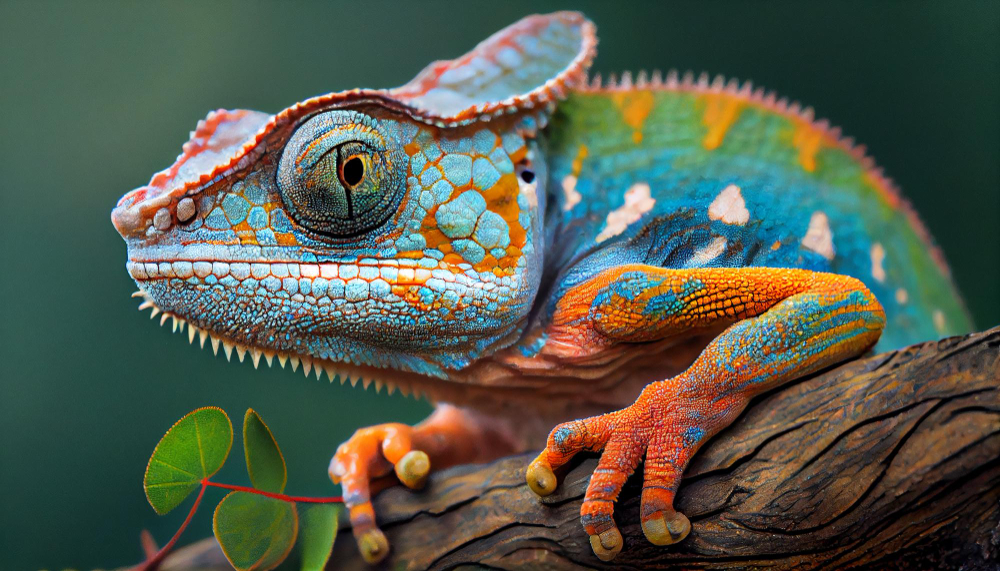Table of Contents
- Visual Signals for Lizard Communication
- Chemical Cues and Pheromones in Lizards
- Auditory Communication in Lizards
- Tactile Communication among Lizards
- Lizard Social Behavior and Communication
- Evolution of Communication in Lizards
How do lizards communicate? It’s a fascinating question that has puzzled scientists for many years. While we know that lizards are capable of communicating with each other, the exact mechanisms they use are still not fully understood. In this article, we will explore 5 surprising ways that lizards communicate, as well as delve into the evolution of lizard communication and how it relates to their social behavior.
Visual Signals for Lizard Communication
One of the most common ways that lizards communicate with each other is through visual signals. Lizards are known for their bright colors and patterns, which they use to signal to other lizards. For example, male anole lizards puff out their throat pouches to display their dewlaps, which can be brightly colored and patterned. This is a way for males to signal to females that they are healthy and strong, and are good candidates for mating.
Another way that lizards use visual signals is through body posture. For example, when threatened, some lizards will puff up their bodies and hiss or open their mouths wide to show off their teeth.
Chemical Cues and Pheromones in Lizards
Lizards are also known to use chemical cues and pheromones to communicate with each other. Pheromones are chemical compounds that are released by an animal and can be detected by other animals. They are used to signal things like sexual receptivity, territorial boundaries, and danger.
For example, male iguanas have been shown to use pheromones to mark their territory and attract mates. They will rub their femoral pores, which are located on their thighs, on rocks and other objects to leave their scent behind.
Auditory Communication in Lizards
While many people associate communication with sound, lizards are not known for their vocal abilities. However, some species of lizards do use sound to communicate with each other. For example, the gecko is known for its distinctive chirping sound, which is used to attract mates and signal territorial boundaries.
Another lizard species that uses sound to communicate is the anole lizard. Males will make a series of clicking sounds by snapping their jaws together. This is used to signal to other males that they are in the area and to attract females.
Tactile Communication among Lizards
In addition to visual signals, chemical cues, and sound, lizards also use tactile communication to communicate with each other. This can include things like touching, nudging, and pushing.
For example, male chameleons have been observed engaging in a behavior called “jousting”, where they push against each other with their horns. This is a way for males to establish dominance and determine who will have access to mating opportunities.
Lizard Social Behavior and Communication
The ways that lizards communicate with each other are closely tied to their social behavior. For example, species that are highly territorial will rely on visual signals and chemical cues to mark their territory and communicate with other lizards. Species that live in groups, on the other hand, may use tactile communication and sound to communicate with each other.
Some species of lizards are also known for their complex social behavior. For example, the green anole lizard has been shown to exhibit social learning, where individuals learn from observing the behavior of others in their group.
Evolution of Communication in Lizards
The evolution of communication in lizards is a fascinating topic that has been the subject of much research. It is believed that communication evolved as a way for lizards to navigate their complex social environments, which can include things like finding mates, establishing territories, and avoiding predators.
Over time, different species of lizards have evolved different communication strategies, depending on their environment and social behavior. For example, species that are highly territorial may rely more on visual signals and chemical cues, while species that live in groups may rely more on tactile communication and sound.
Expert Advice : How do lizards communicate ?
To learn more about how lizards communicate, it’s important to study their behavior in the wild. Observing lizards in their natural habitat can provide valuable insights into the different ways that they communicate with each other.
If you’re interested in studying lizard behavior, there are many resources available online and in academic literature. Additionally, many universities and research institutions offer courses and programs in herpetology, which is the study of reptiles and amphibians.
Frequency Asked Questions about how do lizards communicate
What are the different ways that lizards communicate with each other?
Lizards communicate with each other through visual signals, chemical cues and pheromones, sound, and tactile communication. The specific ways that they communicate can vary depending on their species, social behavior, and environment.
Why do lizards use different communication strategies?
Communication strategies in lizards have evolved over time as a way for them to navigate their complex social environments. Different species of lizards have evolved different communication strategies depending on their environment, social behavior, and other factors.
Can lizards learn from each other?
Yes, some species of lizards have been shown to exhibit social learning, where individuals learn from observing the behavior of others in their group.
How important is communication to lizard survival?
Communication is a critical part of lizard survival, as it allows them to find mates, establish territories, avoid predators, and navigate their environment.
In conclusion, lizards are fascinating creatures that use a variety of communication strategies to navigate their complex social environments. By studying their behavior in the wild, we can gain valuable insights into the ways that they communicate with each other, and how this relates to their social behavior and survival.



